
In my review of the Samsung Galaxy Fold, I called that device the future of portable computing. The keyword is “future”.
The existing, first generation model of the foldable phone is too expensive, and its durability still too unproven, for the average consumer to consider.
LG knows this, and its G8X ThinQ Dual Screen is its answer. Fundamentally, it’s the same concept: a device that offers twice the screen area as a typical phone, but folds in half so it can better fit into pockets.
Here is an in-depth look at what the flagship handset has to offer.
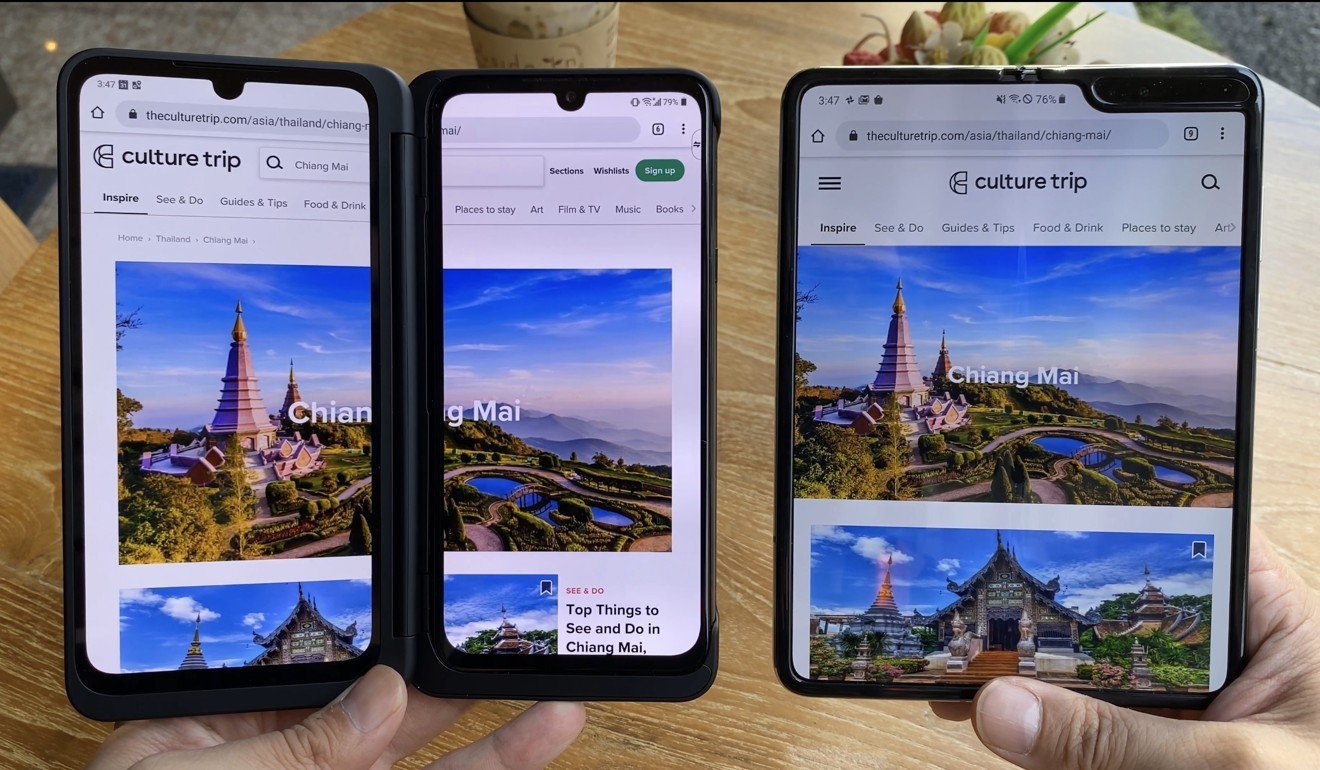
Design and hardware
The G8X by itself is a smartphone that’s unremarkable in every way. Snapdragon 855, 6.4-inch OLED screen with a notch cut-out, glass back … anyone who follows smartphones know the drill by now.
But connect the unit into its included second screen accessory – essentially a smartphone case with a cover flap that has screens on each side – and what was once a solid but bland handset becomes a device that allows for far superior multitasking than any single screen smartphone can handle.
The back and sides of the Dual Screen accessory are made of plastic, so the G8X loses the premium “glass and metal sandwich” feel, but that’s understandable given this phone is more about practicality than style. The thickness is manageable at 15mm (0.6in), and the phone fits into my pockets with no issues.
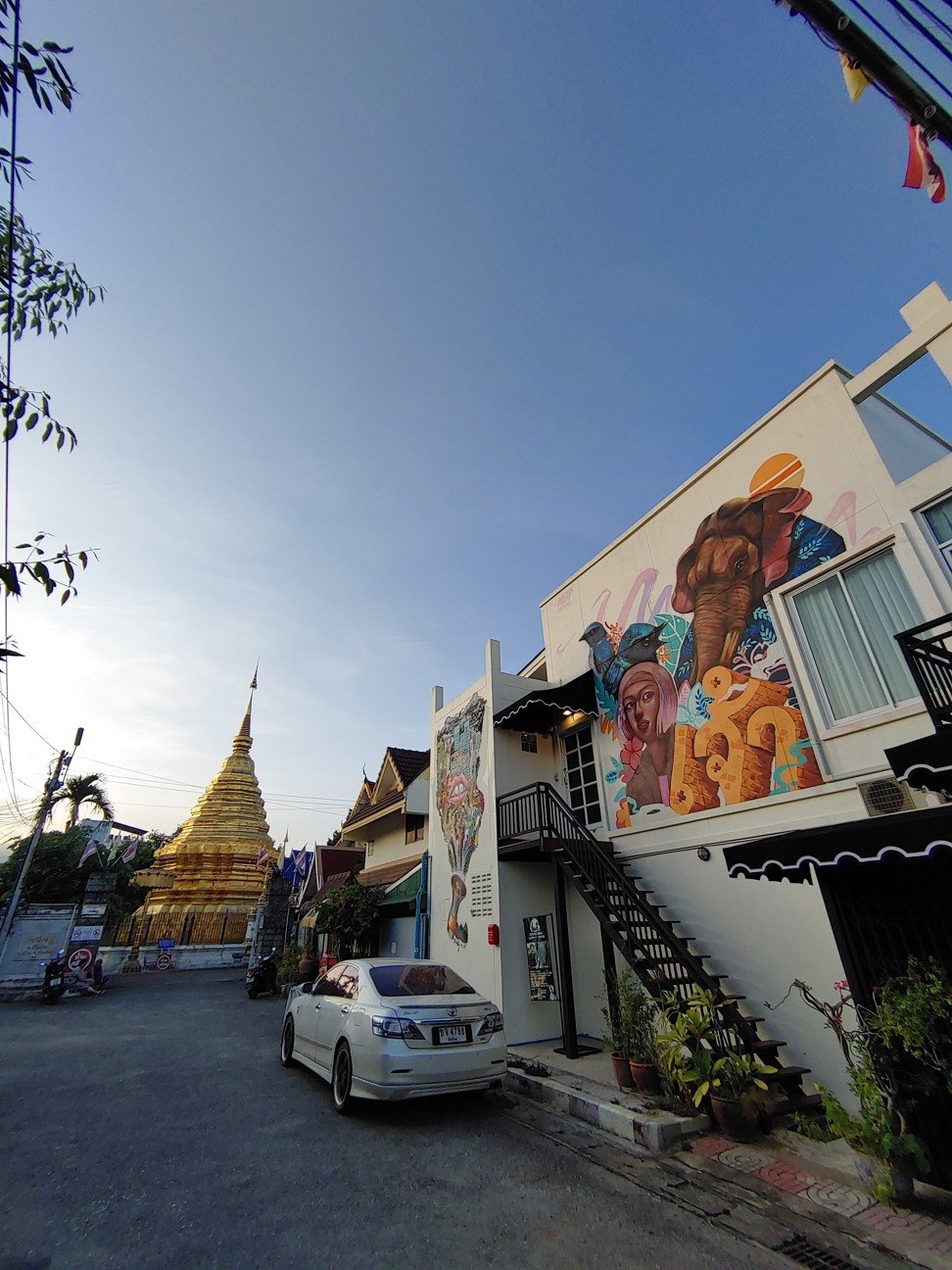
Software and features
For a device that is constantly changing shape and screen size, software is as important as hardware. Here is where LG delivers. While two apps can run simultaneously on the two screens, software wizardry kicks in when they work together.
For example, when the double screen is held in landscape orientation (sideways), LG’s software can push the keyboard to the bottom screen, so the main screen is free to display, say, a WhatsApp chat box or word document without needing to give up screen space to a virtual keyboard.
This also improves the typing experience, as having a keyboard stretched over an entire screen offers larger and more generously spaced keys.
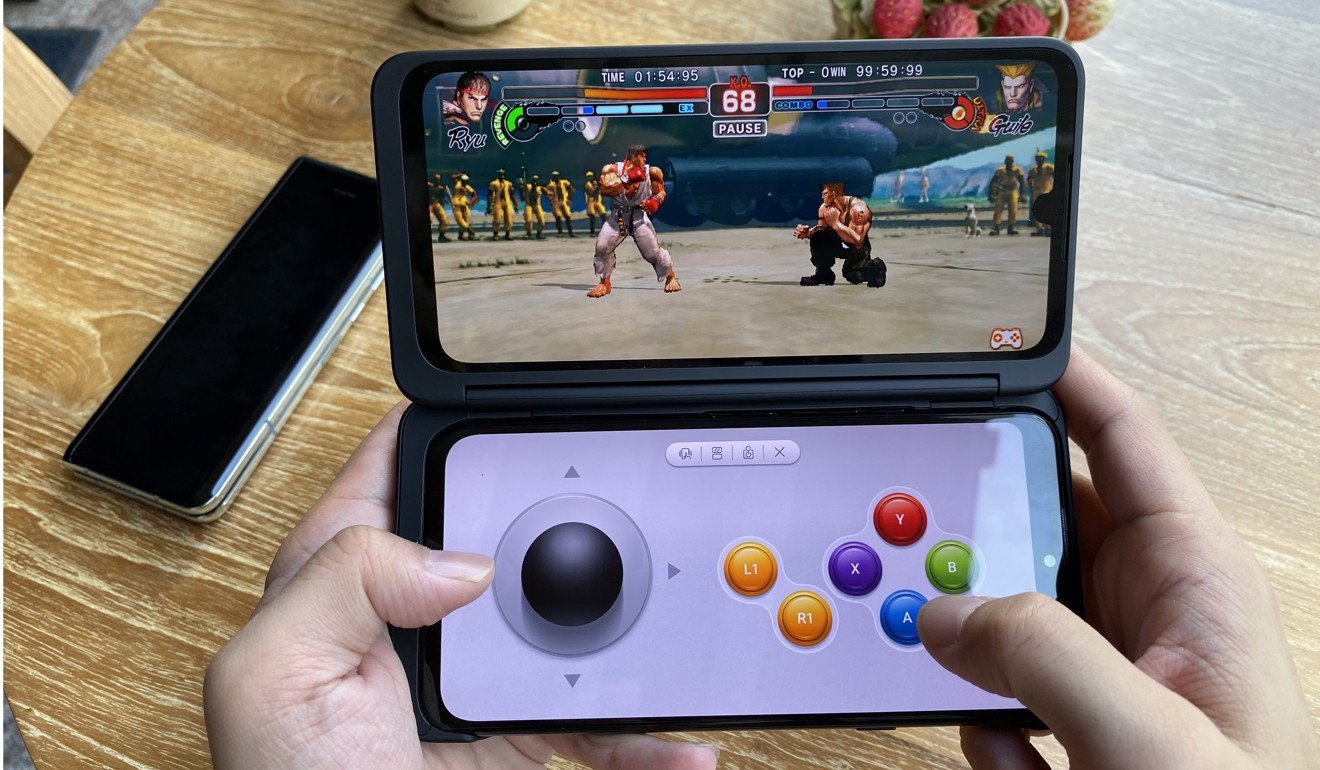
The same software trick works for gaming too: the device can use the second screen to show a digital joystick, freeing up the main screen to concentrate on graphics.
For surfing the web, the G8X can also display articles across both screens for a wide view. This feature only works with Google Chrome and Korean web browser Whale.
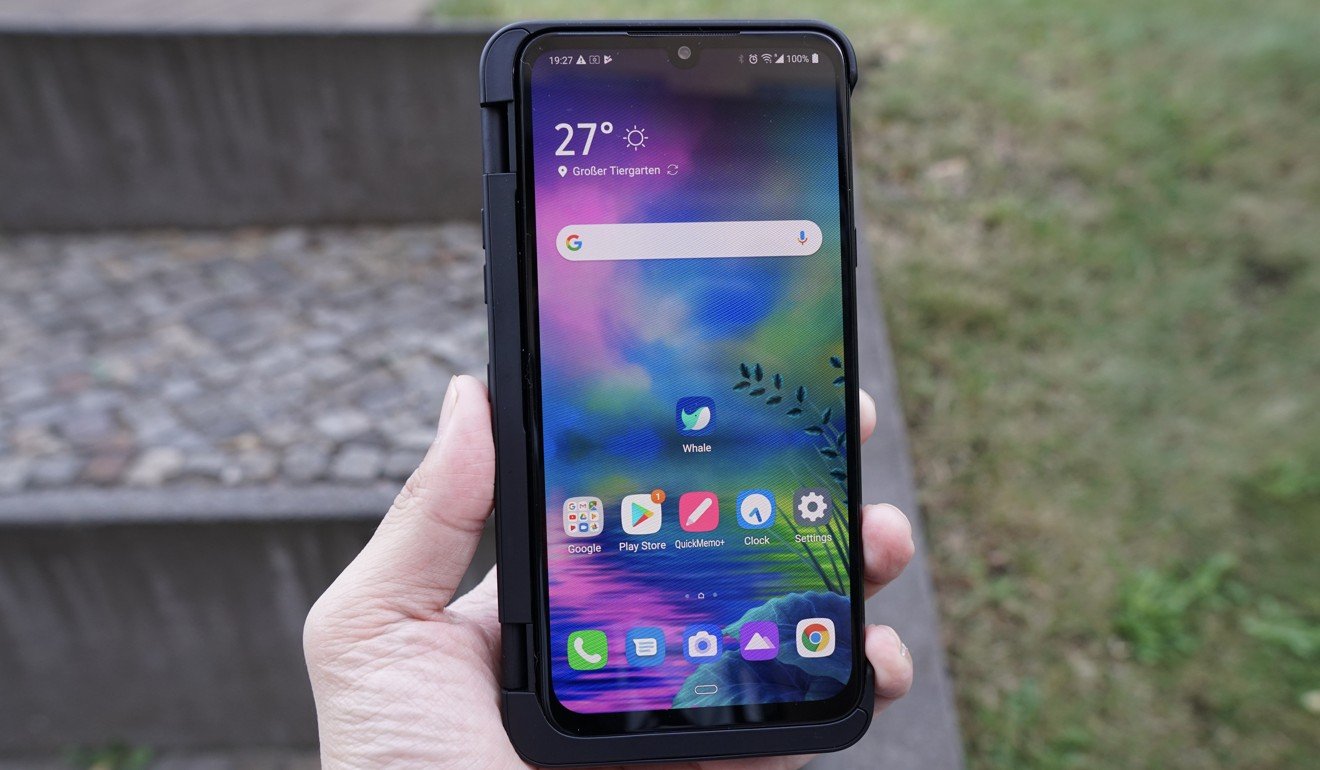
Performance and battery life
The Snapdragon 855’s performance is solid, though the phone doesn’t move as fast as a OnePlus 7 Pro. This is partly due to the G8X having a more pedestrian 6GB of RAM (Chinese phones are cramming in 12GB) and OnePlus’ optimised software.
The real world benefits of having two screens are numerous. On a recent trip to Chiang Mai, I had Google Maps open on one screen to navigate to my Airbnb flat while on the second screen I was on WhatsApp talking to the Airbnb host to coordinate a meet up. Later in the week, I was calculating expenses on a word doc on one screen while using the calculator app on the other.
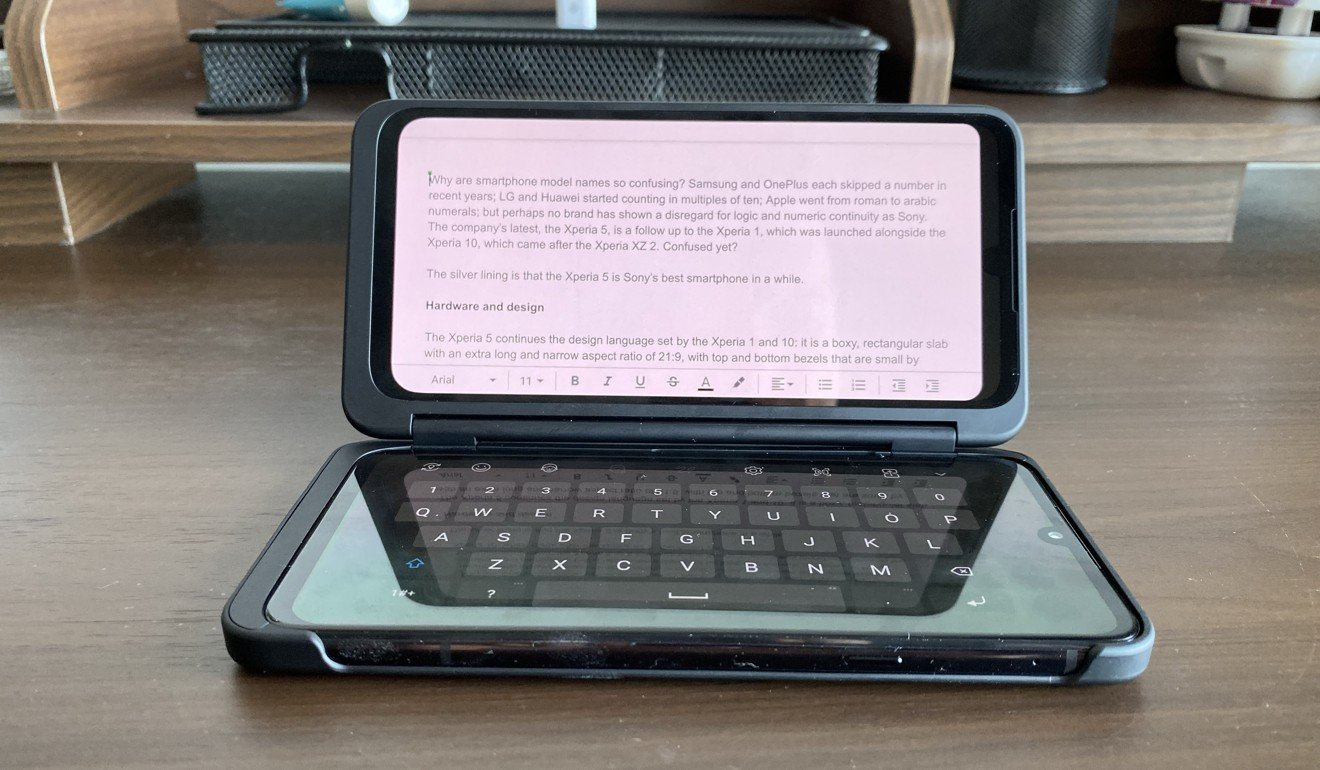
Powering both screens is a single 4,000 mAh battery and, surprisingly, despite my heavy use of the phone, battery endurance has been respectable.
I spent five days in Chiang Mai, during which I was out for 12 to 14 hours each day and used the phone heavily for navigation, WhatsApp and photos. The device went the distance on three of the days. The other two in which it ran out of power, it still lasted until hour 11 or 12. Under a normal workload, battery life will be more than fine.

The phone has a solid camera system: a 12-megapixel standard lens and a 13-megapixel wide-angle, with a 32-megapixel selfie camera. The main cameras are fine.
As a pioneer of the wide-angle camera that’s all the rage this year with other smartphone manufacturers, LG’s wide-angle implementation is still one of the best – it’s easy to switch lenses and image quality remains consistent.
But the main camera lags not just the main shooter of the iPhone 11 Pro but also the Huawei Mate 30 Pro. This is mostly noticeable in low light situations, as the shutter speed slows down a bit too much for my liking in an effort to pull more light. Video capabilities are strong as per usual with LG devices.
Conclusion
LG’s mobile division has fallen on hard times in recent years, partly because its handsets were priced in no man’s land – not much cheaper than Apple’s and Samsung’s best; and more expensive than ultra-value Chinese brands such as Xiaomi and OnePlus.
LG has decided to change that strategy, because the G8X Dual Screen is surprisingly inexpensive by standards previously set by the company. The entire set – phone and second screen attachment – is selling in the US starting at US$699.
At this price – more than US$1,300 cheaper than Samsung’s Galaxy Fold – I think the G8X ThinQ Dual Screen is a great investment for anyone who uses their phone for productivity.
Dimensions: 165.9mm x 84.6mm x 15mm (with Dual Screen; 6.5in x 3.3in x 0.6in)
Weight: 326g (with Dual Screen; )
Display: dual 6.4-inch 2,340 x 1,080 OLED panels
Battery: 4,000 mAh
OS version reviewed: Android 9 with LG UX on top
Processor: Snapdragon 855
Cameras: 12-megapixel f/1.8 main sensor; 13-megapixel f/2.4 wide-angle lens; 32-megapixel selfie lens
Memory: 128GB ROM; 6GB RAM
Colours: black
Price: US$699 (for both phone and Dual Screen)







